To be honest, starting an online business is difficult; many things can go wrong, and profit is rarely seen even after a few months. Many people, including myself, focus on the wrong things, which will not result in a sale. Then we'd all complain about how difficult it is to launch an eCommerce store. But, let me tell you, it doesn't have to be that way, especially with a platform like Shopify to assist you.
What I've discovered is that doing things step by step with great determination is much more productive and can greatly increase your chances of success. It has already gotten better once you get started. I'll go over how to start a successful Shopify store in greater detail below. It won't be the perfect plan, but it will be just what you need to get started.
In this article, I will attempt to share all of the knowledge I have gained through my own experience. I also strongly advise you to stick to your notes and experiment with new ideas in order to achieve success. Once your store is up and running, you will be constantly learning and adjusting, so prepare mentally. Let's get started with that in mind.
About Shopify?
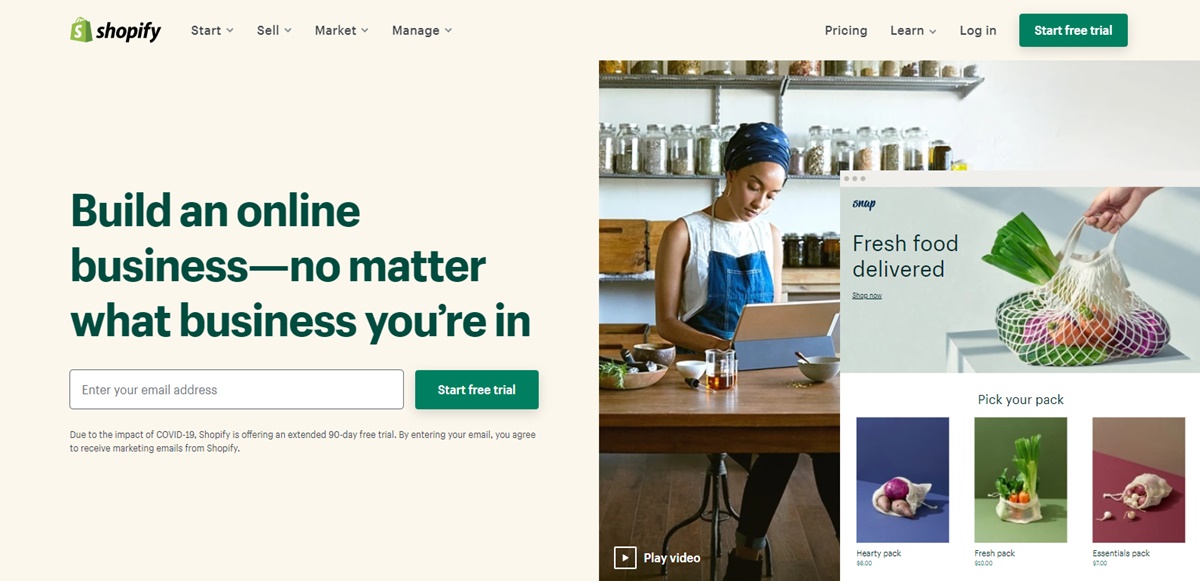
Shopify is a Canadian eCommerce platform founded in 2006. Shopify can be used to create an online store or to sell in person using its Shopify POS. You can enter store data, process orders, and add products using a cloud-based admin dashboard for a monthly fee.
You will also have access to a large library of free and paid design templates. On all devices, the themes are modern, clean, and responsive. You can modify the chosen theme to fit your brand better without knowing how to code. There is also an app store with thousands of integrations that can improve the functionality of a store in marketing, customer service, product management, and other areas.
One important aspect of Shopify is that you can subscribe to secure, dependable hosting for your website. Due to a free SSL certificate and 99.8% uptime on all Shopify stores, you don't have to worry about your store crashing during peak traffic or being hacked. Finally, your payments entitle you to 24-hour customer service via phone, email, and live chat. You can also use Shopify's Help Center to troubleshoot minor and common issues.
To test the platform, sign up for a 14-day free trial (which has been extended to 90 days during COVID-19). You can even make your first sales and profit while on the trail. The Lite plan, which is used for an existing website, costs $9 per month. Their basic plans, on the other hand, start at $29 per month, rise to $79 per month for the middle plan, and top out at $299 per month for the advanced plan. Most first-time store owners begin with the $29/month Basic plan.
In short, Shopify has everything you need to get started selling on your own store, whether online or offline.
10 Steps to start a successful Shopify store
The following ten steps will help you launch a successful Shopify store, with advice on everything from coming up with a profitable idea to determining your management strategy and finally launching your product.
1. Identify your business idea
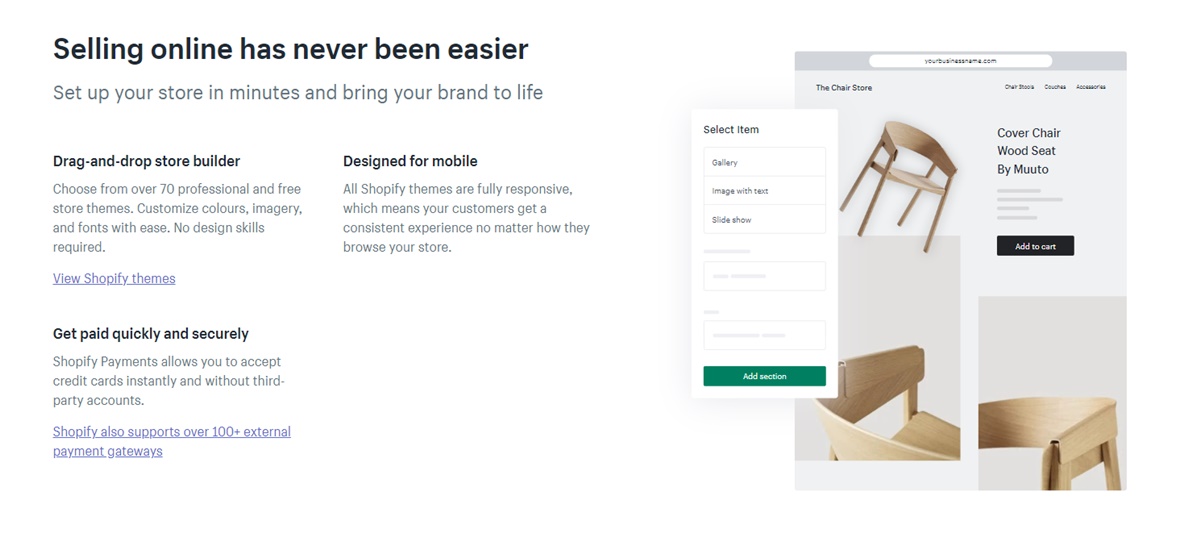
Finding a business idea should be approached methodically by learning from what has worked for other entrepreneurs. Whether you're just trying out a low-cost side hustle or going all-in on a great idea, the best ways to find a product to sell are:
- Align with your personal interests: What are your hobbies in the spare time? Are there products related to your likings that you can sell? Do you have a solution for a common frustration you and your peers have?
- Capitalize on trends: If you notice a specific item that seems to be popping up everywhere, or you have an idea to innovate a popular product, those can be great business ideas for your online stores.
- Research existing products: Check product reviews to see if there are common complaints about some popular products, and see if you can fill in a gap on the market.
Remember, all you need to get started is one idea. Many successful Shopify businesses began with a single signature product and then expanded into complementary products. You can start testing whether customers are willing to pay for your products based on the ideas.
There are numerous ways to accomplish this, including opening a store to accept preorders, developing a beta version to sell, and launching a crowdfunding campaign on Kickstarter, among others. When in doubt, begin selling as soon as possible to learn from customer feedback and understand how to improve your products.
2. Have a business name
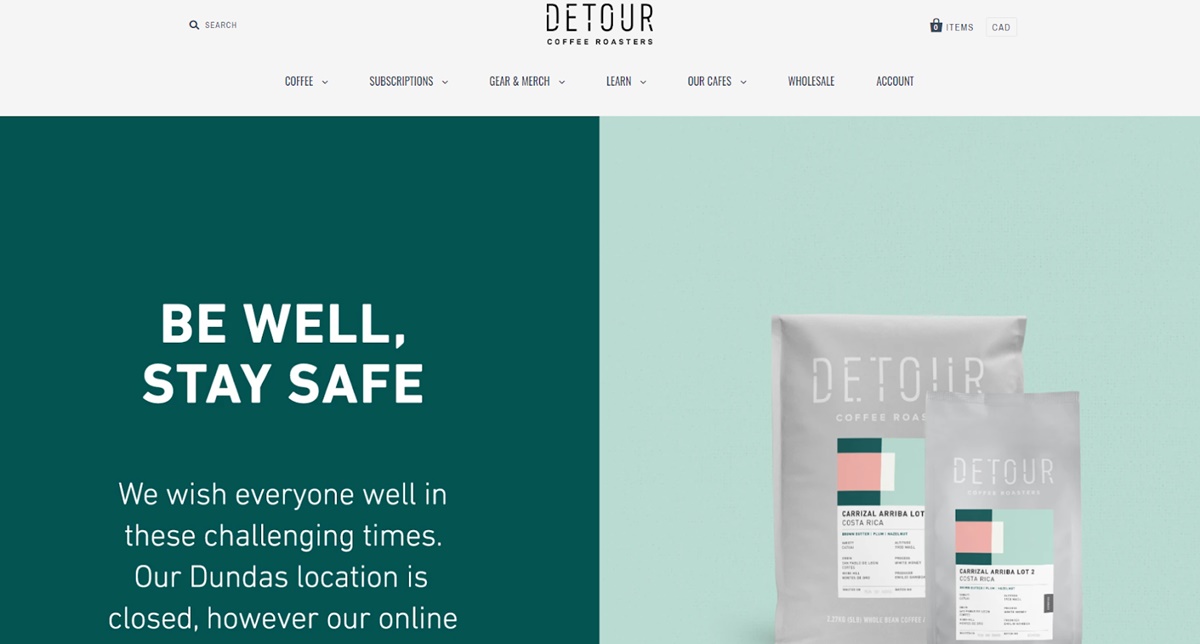
Now that you have a product idea, start looking for a name for your company that clearly states what you do. It should also be short, memorable, and unique to your industry. It is not an easy task, but it is doable with a little effort and imagination. If you're stuck for a name, try some free business name generators.
Your company name should include the following elements:
- Original: You don't want just to avoid similar names, you want to make sure that your business name is not used by any competitor. You can run a trademark search in the countries you do business, and search on Google and social media sites. The same goes for URLs, do a domain name search before you register anything.
- Short and simple: You want your visitors and customers to remember your name quickly, and the best way to do that is using short names. One or two words is ideal, if you use three to four short words, create a memorable phrase.
- Industry-relatable: If your industry tends to have a common tone in the business name, consider using the similar tone too. That said, if there is a chance to have a name that really stands out and is still relatable, definitely go for it.
3. Signing up for Shopify
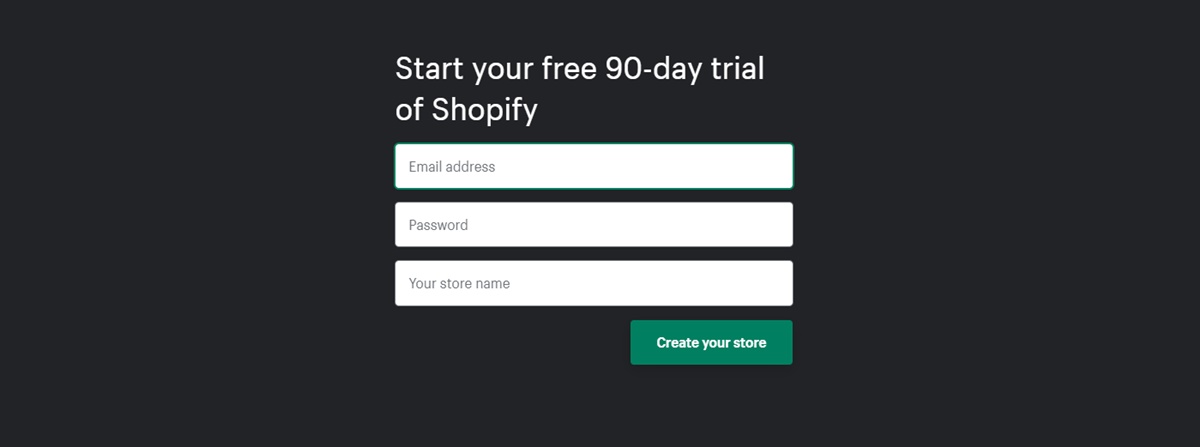
It's time to pay a visit to Shopify, which has a great idea and an awesome name. You can create a new account by using the signup form. Simply fill out the form and click the 'Start free trial' button. Previously, you would have had to buy a server, upload your store system, hire someone to customize, and pay to maintain the site, but Shopify has made this process much easier. All server setup and maintenance is handled for you once you sign up.
Following the initial screen, you will be prompted to enter your name, country, address, and contact information. There will also be inquiries about your products and your sales goals. If you're only using the free trial to see how things work, you can skip ahead by selecting 'I'm just playing around' and 'I'm not sure'.
When you're finished, click 'I'm done.'
4. Set up an online store

You will be taken directly to your store admin screen after signing up. You can begin customizing your store, setting up payments and shipping, and uploading products from this page. To ensure that your store looks good, choose a theme or template now. Navigate to Shopify's theme store.
The available themes are all guaranteed to have responsive designs on all devices as well as designer support. You can make extensive changes to your chosen theme without touching a line of code. The premium themes are more customizable and cost between $140 and $180, but you can still have a great looking site by using the free themes.
You can sort the themes by price, features, and industry. There are also filters for popularity, price, and most recently used. Once you've found one you like, check out the demo for more information and read some reviews to see what other business owners who use the theme have to say about it. If the theme is available in multiple styles, you can choose different styles for your store later.
If you've decided on a theme, simply click the buy button. Shopify will ask you if you are certain you want to install the theme; you can confirm by clicking the 'Publish as my Shop's theme' button. If you are unsure, don't worry; you can always change your mind later.
After installing the theme, you can access your Theme Manager and view the published themes (the one you installed for your store) as well as unpublished themes (other installed themes that haven't been used). After that, your store is essentially finished.
5. Edit Shopify settings
To make your Shopify store run smoothly, you will need to adjust a few settings. Click on the 'Settings' section with the gear icon in the bottom left corner of the dashboard. Fill out all of the store information in the 'General' section; this will cover everything customers need to know about your business. We will then proceed to the other necessary settings.
- Payments: Payment gateway is the method a customer would do transactions with your store. Naturally, PayPal is the default method, but I highly recommend Shopify Payments for no transaction fees if you are eligible. You can sign up for Shopify Payments by providing your business information, product information, personal details, and bank account details. Other than that, you can remove, change, or add additional payment gateways like Amazon Pay, Stripe, Google Pay, and more.
- Checkout: You can modify your checkout settings to your own references with your store's logo, fonts, colors, and more. You can also choose if you want your customers to create new accounts when they check out. For new stores, keeping this option as optional is best so buyers can check out as guests.
- Legal policies: Your store needs clear terms and conditions, return politics, and privacy claims to protect yourself and the customer during the buying process. Shopify offers some handy tools to auto-generate these, you can access through
Settings > Legal. You can edit the Shopify templates to your own rules. - Shipping rate: An online store often attracts customers with free delivery, and you can set this as default too. But if you want to modify this, go to
Settings > Shippingand you can set shipping preferences for shipping zone, minimum order price, and specific shipping rate.
With all the changes above, always remember to click 'Done' or 'Save' to keep your progress.
6. Add your products
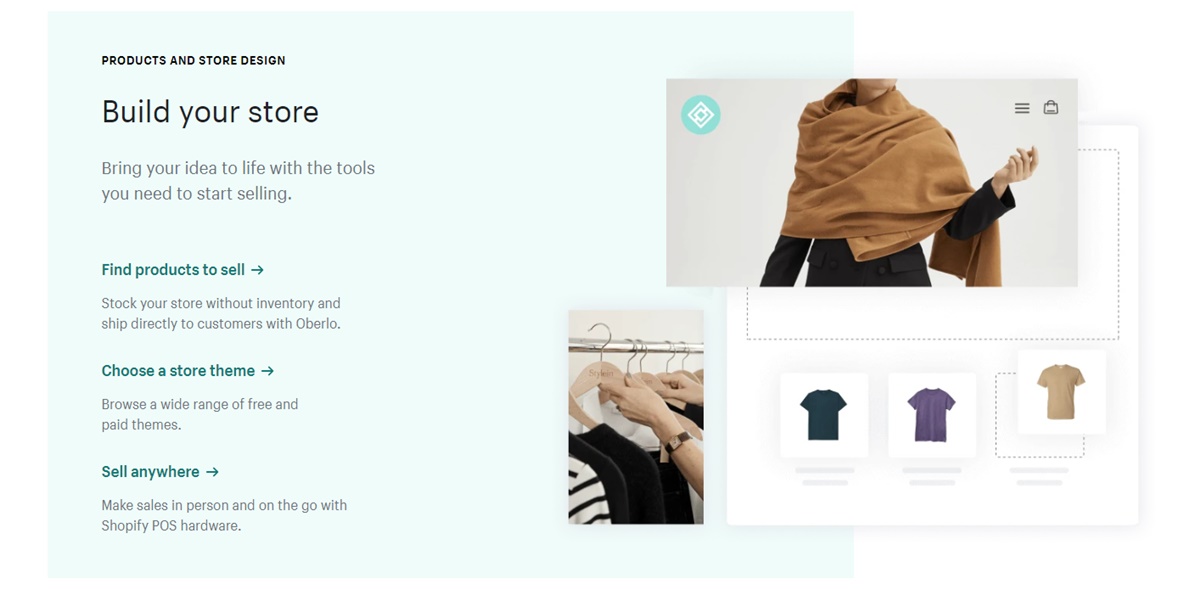
We can now begin adding products to your Shopify store and customizing the names, photos, descriptions, and other details such as tags and collections. Before you begin, make the decision that you will make your products look good from the start, which means that all of the content must be as appealing as possible. This will earn you a lot of love from future visitors while also saving you time from unnecessary headaches.
We'll go over the most important aspects of adding your products to a successful Shopify store, which are:
- Description: Create a product description that can provide enough information that makes visitors want to buy your products immediately. Your brief description needs to say what problems it solves, what customers gain from using it, and what makes it different from other products on the market. Keep your text tone casual and positive, and also break it into digestible chunks with headings, bullet points, and a lot of visuals.
- Images: If you are doing dropshipping, you may not need to care about this, but every store should take product photos of their own. If you are selling popular products, you can use stock photography from websites like Unsplash. For taking your own images, try to create high-converting images with your brand's personalities. You can rearrange the uploaded images, so don't worry about setting them in any particular order.
- Pricing & Inventory: Shopify's product pricing section has three fields: price (main price), compare at price (to inform a sale), and cost per item (to calculate profit margin). You can also track your product's inventory by clicking on the 'Track quantity' checkbox and showing the number of items available to purchase. When the number turns to zero, Shopify will display "Out of stock" so people can't place orders while you refill the stock.
- Collections: Collections are necessary to group your products into relevant categories. Just go to Products > Collections > Add New Collection, here you can enter the collection's name and select the conditions. For example: If you are selling jewelry, your collections will be something like: Rings, Earrings, Watches, Bracelets, Necklaces, etc.
- About Us page: This page actually has a huge impact on your product sales, since people tend to buy from stores that they feel connected. Your 'About Us' page needs to look unique, personal, and tell a story about how your brand started. Show pictures of yourself to increase credibility. If you don't know what to write, you can try some About us page templates, generators online.
Once everything is filled out, remember to click the 'Save product' button to save your work so far.
7. Plan workload and solutions

You are very close to launching your successful Shopify store at this point, but you must do some preliminary planning before embarking on the journey. Estimate how much work you will need to do in the future and what skills you will need to learn. This will direct your timetable and investment in the store.
If you are doing business on your own, you will be constrained by the amount of time you have in a day. If you decide to hire help, you must consider the costs as well as the time involved in finding suitable employees or freelancers. Here are some fundamental skills to consider learning or hiring:
- Design: You will need to make some design decisions for your business, from having a new logo to specific colors. If you want to customize your theme, website design would be required too.
- Photography: As mentioned, you would need photos for your products. Other photos to show your working process and source of materials can help too.
- Marketing: As an integral part of any business, you would need multiple skill sets for marketing. Start by identifying which marketing activities can bring the biggest benefit for your business, and make a list of the skills needed for that. Do some research to understand some common promotional tactics that your industry's companies use, and see if you have the skills required to implement them. You can always hire experts to do tasks for you.
- Shipping: A shipping strategy is needed to cover key details like shipping price, packaging solutions, and locations that you can ship to. How you sell nationally, internationally, or just locally will be affected by your shipping strategy, so set some goals to change as your business grows.
- Help: you may not always need this, but if there are new projects, see where you can hire help and how these will benefit you. You can hire a virtual assistant for routine tasks or collaborate with experts for larger projects, and work with influencers to promote your business.
Once you've determined what you need to accomplish and who will be doing the work, you can use workload management to make your life easier. To list, assign, and track tasks, use time management tools such as Trello or Asana. These are especially useful for online teams, but the structure of your company is still the most important.
8. Launch a Shopify store

You are now prepared to take the final step: launching a successful Shopify store. The preparation you've done thus far is a solid foundation for a smooth and impactful launch. While each launch is distinct in its own way, there are some elements you can tweak to make your store stand out.
- Main Menu/Navigation: This shows up on every page of your website as items across the header, or as a list of icons in the sidebar. Your visitors would use this to find information and products on your store. So you can edit the navigation section to make an effortless browsing experience at Shopify admin > Navigation section > Main menu. To make the top part of your page more colorful, you can use AVADA's Free Shipping Bar to alert free shipping policy or sales.
- Main Banner: Create a cool looking banner or hero image to capture visitor's attention right the way. Remember, this is the first impression, so try to make your image as impressive as possible. When people see it, it will make them think: "Wow, I want to buy this!"
- Featured Products: If you go to Customize Theme > Home page > Featured Products, you can select a collection of featured products. These will be showcased on the homepage under the tag of 'Featured'. These are your best or newest models to impress visitors, so pick your best cards.
- Footer: In Online Store > Navigation > Add menu, you can create a Footer and decide what to show here. A custom background can be attractive, and you can link to your other important pages to keep the visitors on your site longer.
That's it! Ready? Then you can start publishing your online store right away! You've just launched a new Shopify store.
9. Market your business
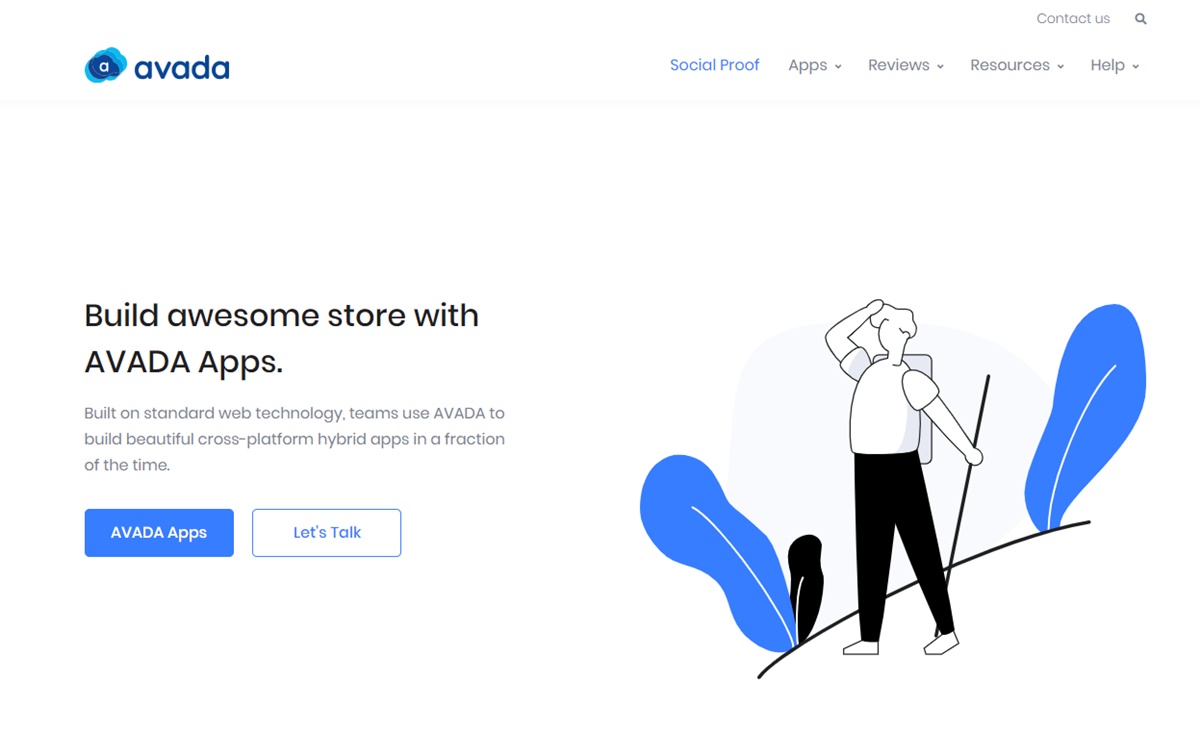
The hard work of marketing your business begins now that you've launched your Shopify store. While many new store owners would promote their physical products in person, the reputation of an online store is built on one thing: driving targeted traffic. Marketing tactics for acquiring the first customer will vary depending on your budget and resources.
10. Test, Analyze, and Adjust

Analytics dashboards, as well as full and analytics reports, are available in the Shopify admin panel. If you use the Shopify plan or higher, you can gain access to three additional report categories: behavior, acquisition, and marketing. These will provide you with a plethora of metrics to help you gain insights and grow your Shopify store.
To avoid becoming lost in a data maze, here are some key metrics that can help you understand customer behavior on your site prior to making a sale.
- Traffic: First and foremost, you should monitor the number of visitors that are visiting your shop. See where they are coming from and how many of them there are. Once you see which channel helps people find your store, you can make better decisions about marketing and location shipping.
- Conversion rates: This metric shows if your visitors are converting into customers, which can be shown in three numbers: the people that add items to their carts, the people that reach the checkout, and the people that go on to purchase. Each of these groups belong to a funnel that you can adjust to have better sales performance.
- Total sales: This is a make-or-break metric for your Shopify store, so you clearly need to monitor it closely. Look at a few months of data to see the trend in your sales, and ask yourself to explain why. For example: If you notice a spike in sales in March, see how your marketing performed that month and could it be a starting point for a new campaign.
- Average order value: Your average order value shows how much an average customer spends in a single cart on your store. And it shows the performance of your product mix, discount strategy, and more. You can increase this metric without getting new sources of traffic, so it is a powerful metric to optimize.
- New vs. returning customers: Ideally, it is easier and cheaper to have a returning customer, but everyone's a new customer at a point in time. So you want to see a balance between new and returning customers, and see what percentage of new customers become regular buyers over time.
To run a successful Shopify store, you must constantly analyze and adjust based on the metrics provided. However, if you do it well, you will see more opportunities for your business to thrive. Test campaigns every now and then to see which ones work best for your brand, and keep in mind that this is the only way to ensure consistent success.
Thank you for reading
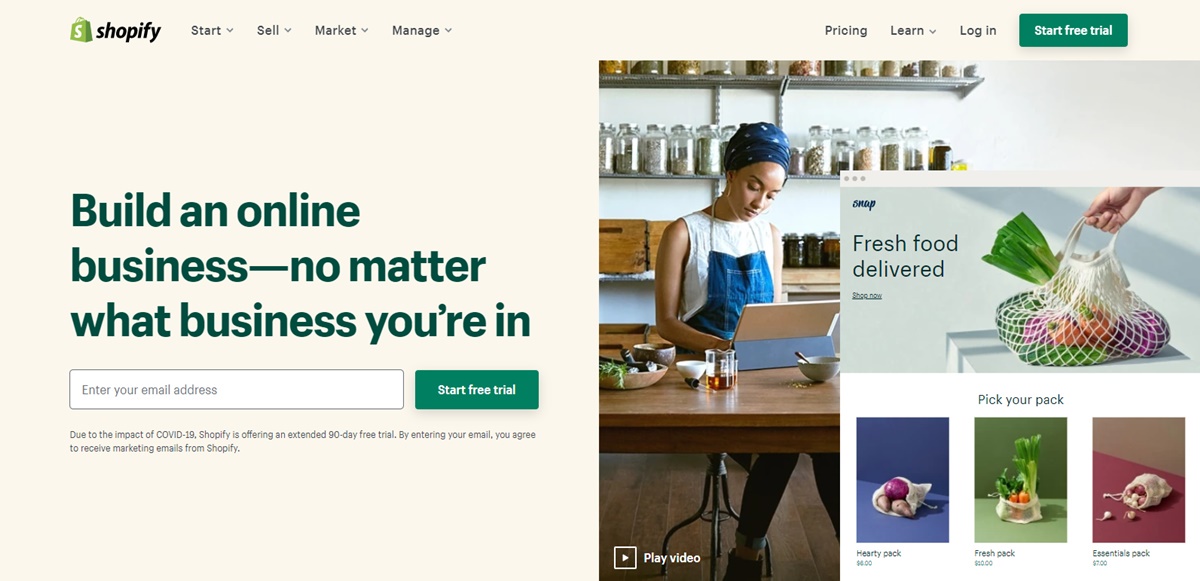

No comments yet